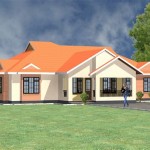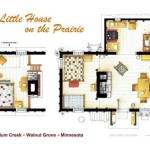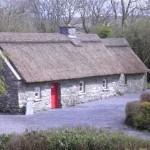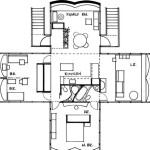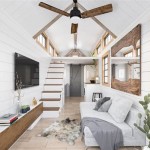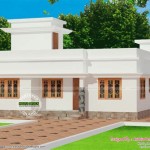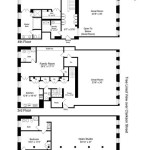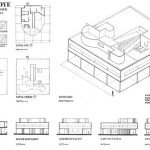Camp Callaway House Plans: A Comprehensive Guide
Camp Callaway, a planned community known for its rustic charm and integration with nature, has seen considerable interest in its unique house plans. These plans cater to a diverse range of homeowners, from those seeking cozy weekend retreats to families desiring a permanent residence amidst natural surroundings. Understanding the nuances of Camp Callaway house plans is essential for anyone considering building or purchasing property within this community.
This article provides a comprehensive overview of Camp Callaway house plans, exploring their distinctive features, common architectural styles, factors influencing plan selection, and the process involved in securing and implementing these plans. It aims to equip prospective homeowners with the knowledge necessary to make informed decisions when choosing a house plan that aligns with their lifestyle and preferences.
Key Features of Camp Callaway House Plans
Camp Callaway house plans are distinguished by several key features, each contributing to the community's overall aesthetic and commitment to environmental harmony. These features often reflect a blend of traditional design principles with modern amenities, creating homes that are both comfortable and visually appealing.
Emphasis on Natural Materials: One of the most noticeable features is the prominent use of natural materials. Exterior cladding frequently incorporates wood siding, stone veneer, and exposed timber elements. These materials not only blend seamlessly with the surrounding landscape but also contribute to the architectural character of the homes. Interior spaces often feature wood beams, hardwood floors, and stone fireplaces, reinforcing the connection to nature within the living environment.
Open Floor Plans: Many Camp Callaway house plans incorporate open floor plans, designed to maximize natural light and create a sense of spaciousness. These layouts typically combine the living room, dining area, and kitchen into a single, unified space, fostering a sense of connection among family members and facilitating social gatherings. The open design also allows for greater flexibility in furniture arrangement and customization of the living space.
Outdoor Living Spaces: Considering the focus on natural surroundings, Camp Callaway house plans often prioritize outdoor living spaces. Large porches, decks, and patios are common features, providing residents with ample opportunities to enjoy the fresh air and scenic views. These outdoor areas often include seating areas, outdoor kitchens, and fireplaces, extending the living space beyond the confines of the home's interior. Such spaces are designed for relaxation, entertainment, and connection with nature.
Large Windows and Natural Light: Maximizing natural light is a crucial factor in Camp Callaway house plans. Large windows, strategically placed throughout the home, allow ample sunlight to penetrate the interior spaces. This not only reduces the need for artificial lighting but also creates a bright and cheerful atmosphere. The windows are often designed to offer panoramic views of the surrounding landscape, further enhancing the connection to nature.
Energy Efficiency: Modern Camp Callaway house plans frequently incorporate energy-efficient features to minimize environmental impact and reduce utility costs. These features may include energy-efficient windows and doors, high-performance insulation, and solar panels. Sustainable building practices are often employed to ensure that homes are environmentally friendly and energy-efficient. This aspect of the designs caters to the increasing demand for sustainable and responsible living.
Common Architectural Styles in Camp Callaway
The architectural styles represented in Camp Callaway house plans are diverse, reflecting a range of design influences while maintaining a cohesive aesthetic within the community. Several architectural styles are prominently featured, each offering a unique interpretation of the rustic and nature-inspired themes.
Craftsman Style: The Craftsman style is a prevalent architectural style in Camp Callaway, characterized by its emphasis on handcrafted details and natural materials. These homes typically feature wide porches with tapered columns, exposed rafter tails, and decorative brackets. Interior spaces often showcase wood trim, built-in cabinetry, and stone fireplaces. The Craftsman style exudes a sense of warmth and craftsmanship, making it a popular choice for homeowners seeking a timeless and inviting design.
Farmhouse Style: Another common architectural style is the Farmhouse style, which draws inspiration from traditional rural homes. Farmhouse-style homes in Camp Callaway often feature gabled roofs, clapboard siding, and large covered porches. Interior spaces are typically characterized by open floor plans, shiplap walls, and rustic wood accents. The Farmhouse style evokes a sense of nostalgia and simplicity, appealing to those seeking a comfortable and relaxed living environment.
Mountain Modern Style: Combining rustic elements with modern design principles, the Mountain Modern style is gaining popularity in Camp Callaway. These homes feature clean lines, large windows, and a mix of natural materials such as wood, stone, and metal. Interior spaces often incorporate open floor plans, minimalist furnishings, and dramatic lighting. The Mountain Modern style offers a contemporary take on the traditional rustic aesthetic, appealing to homeowners with a taste for modern design.
Rustic Lodge Style: For those seeking a more traditional rustic aesthetic, the Rustic Lodge style is a fitting choice. These homes typically feature log construction, exposed timber framing, and stone fireplaces. Interior spaces often incorporate rustic wood furnishings, leather accents, and antler chandeliers. The Rustic Lodge style creates a cozy and inviting atmosphere, perfect for those seeking a mountain retreat.
Cottage Style: Characterized by its charm and compactness, the Cottage style is also found within Camp Callaway. These homes feature steeply pitched roofs, dormer windows, and decorative trim. Interior spaces are often cozy and intimate, with features such as built-in shelving and window seats. The Cottage style offers a quaint and charming living environment, appealing to those seeking a smaller and more manageable home.
Factors Influencing House Plan Selection
Selecting the right house plan in Camp Callaway involves considering several factors to ensure that the chosen plan aligns with the homeowner's needs, preferences, and lifestyle. A careful evaluation of these factors is crucial for making an informed decision and ensuring a satisfying living experience.
Lot Size and Topography: The size and topography of the building lot play a significant role in determining the suitability of a particular house plan. Larger lots may accommodate larger homes with sprawling floor plans, while smaller lots may require more compact designs. The topography of the lot, including slopes and elevation changes, can also influence the placement and design of the home. Some plans are designed to be built on sloped lots, while others are better suited for flat terrain.
Lifestyle and Family Needs: The homeowner's lifestyle and family needs should be a primary consideration when selecting a house plan. Families with young children may require a different floor plan than empty nesters or retirees. The number of bedrooms and bathrooms, the size of the kitchen and living areas, and the presence of specialized spaces such as home offices or recreation rooms should all be tailored to the specific needs of the occupants.
Budget and Construction Costs: The homeowner's budget and estimated construction costs are crucial factors in the house plan selection process. Different house plans vary in complexity and material requirements, which can significantly impact construction costs. It is essential to obtain accurate cost estimates from reputable builders and contractors before committing to a particular plan. Budgetary constraints may necessitate compromises in terms of size, features, or material choices.
Community Guidelines and Restrictions: Camp Callaway, like many planned communities, has specific guidelines and restrictions relating to architectural design, building materials, and landscaping. These guidelines are intended to maintain the community's aesthetic and ensure compatibility among homes. Homeowners must familiarize themselves with these guidelines and ensure that their chosen house plan complies with all applicable regulations. It is recommended to consult with the Camp Callaway homeowners association or architectural review board to ensure compliance.
Personal Preferences and Aesthetic Choices: Ultimately, the selection of a house plan is a matter of personal preference. Homeowners should choose a plan that reflects their individual style and aesthetic sensibilities. Factors such as architectural style, interior finishes, and outdoor living spaces should all align with the homeowner's vision for their dream home. It is beneficial to review various house plans, floor plans, and architectural renderings to gain inspiration and identify the features that are most appealing.
By carefully considering these factors, prospective homeowners can confidently select a Camp Callaway house plan that meets their needs, fits their budget, complies with community guidelines, and reflects their personal style.

Image Result For Camp Callaway Cabin Floor Plans Cottage Plan

Cozy Camp Callaway Cottage Small House Design

The Camp Callaway Cottage Is A Stunning Retreat In Woods Tiny House Interior Design Small Living

Small And Cozy Rustic Cabin In Georgia Ina Jessamine Cottage

Camp Callaway A 1 091 Sq Ft Paradise Tiny House Town

The Camp Callaway Cottage Is A Stunning Retreat In Woods Tiny Houses

Camp Callaway Cabin House Plans Small Cottage Homes

The Camp Callaway Cottage Is A Stunning Retreat In Woods Small House Plans Designs Homes

Camp Callaway A 1 091 Sq Ft Paradise Tiny House Town

The Camp Callaway Cottage Is A Stunning Retreat In Woods 2024 Small House Plans Dream Pictures Tiny Cottages

